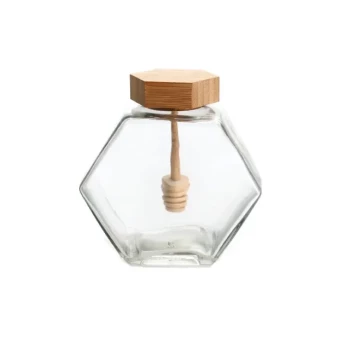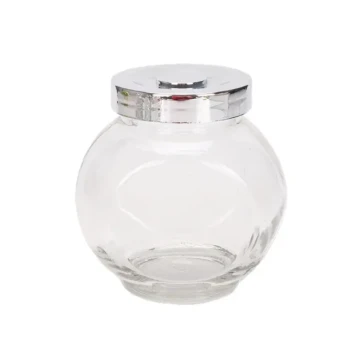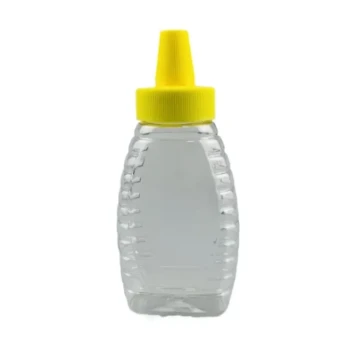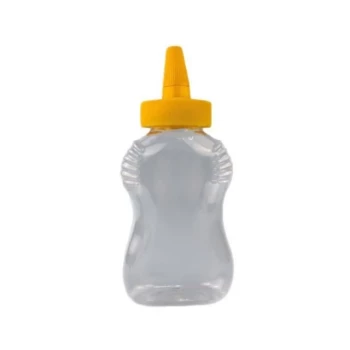Yes, you can absolutely store honey in a plastic bucket, provided it is the correct type. While some plastics are unsuitable, the beekeeping industry overwhelmingly relies on specific food-grade plastic buckets for bulk storage and transport due to their safety and practicality. The critical factor is not whether the container is plastic, but whether it is made from the right plastic.
The debate over storing honey in plastic isn't about plastic versus glass, but about using the right tool for the job. Food-grade, high-density polyethylene (HDPE) buckets are the safe and practical standard for bulk storage, while glass remains the ideal choice for long-term, small-batch preservation.
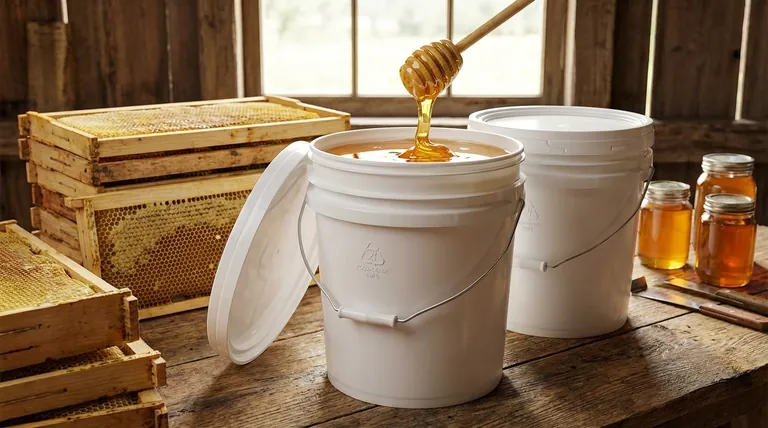
Why Container Choice Is Critical for Honey
To understand the best storage practices, we must first appreciate honey's unique chemical properties. These two characteristics have the biggest impact on its storage.
Honey is Hygroscopic
Honey is a supersaturated sugar solution with very low water content. This means it will actively draw moisture from the surrounding air.
An airtight seal is non-negotiable for any honey container. If exposed to air, honey will absorb moisture, which can lead to fermentation and spoilage.
Honey is Acidic
Honey has a naturally low pH, typically between 3.5 and 4.5, making it acidic.
This acidity can react with certain materials, especially metals, which is why honey should never be stored in reactive metal containers. Properly chosen plastics and glass are non-reactive and do not pose this risk.
The Truth About Storing Honey in Plastic
The concern that "plastic is permeable" is an oversimplification. While some thin or low-quality plastics can allow for molecular transfer, the right kind of plastic creates a highly effective barrier.
Not All Plastics Are Created Equal
The key is to use food-grade plastic. These materials have been certified by regulatory bodies as safe for contact with food and will not leach harmful chemicals.
Using a non-food-grade bucket, like a utility pail from a hardware store, is dangerous. These can contain chemicals, dyes, and plasticizers (like BPA) that can contaminate your honey.
The Standard: Food-Grade HDPE
The vast majority of "honey buckets" are made from HDPE (High-Density Polyethylene), often marked with the #2 recycling symbol.
HDPE is the industry standard because it is strong, non-reactive with honey's acidity, and provides an excellent moisture barrier. It is the same material trusted for milk jugs and other food containers.
Look for the "Food-Safe" Mark
Always verify that your plastic bucket is intended for food. Look for a cup-and-fork symbol or text that explicitly states it is "food-grade" or "food-safe." When in doubt, purchase your buckets from a dedicated beekeeping or food-supply company.
Understanding the Trade-offs: Plastic vs. Glass
Both food-grade plastic and glass are excellent choices for storing honey, but they serve different primary purposes and have distinct advantages.
Why Plastic Buckets Dominate Bulk Storage
Beekeepers and commercial producers overwhelmingly use food-grade HDPE buckets for a few practical reasons. They are lightweight, durable, less expensive, and easily stacked for efficient transport and storage. For handling quantities measured in gallons, glass is simply not feasible.
The Case for Glass: The Gold Standard for Purity
For long-term archival or retail packaging, glass is the superior choice. Glass is completely impermeable, meaning there is zero risk of air or odor transfer over many years. Its transparency also beautifully showcases the honey's color and clarity.
The Risk of Permeability and Odor Transfer
The primary concern with lower-quality plastics is their potential to absorb odors from the environment. If you store honey in a low-grade plastic container next to onions, for example, the honey could eventually take on that flavor. This is not a significant risk with thick, high-quality HDPE, but it highlights why material choice is so important.
Making the Right Choice for Your Honey
Your choice of container should be guided by your specific goal.
- If your primary focus is harvesting and bulk storage: Use new, food-grade HDPE #2 buckets with airtight, gasketed lids. This is the safest and most practical method.
- If your primary focus is long-term preservation or gifting: Transfer your honey into clean, airtight glass jars. This is the best way to guarantee purity and presentation over many years.
- If you are buying honey for home use: Honey sold in either glass jars or clearly marked food-safe plastic squeeze bottles is perfectly safe for consumption and storage.
Ultimately, protecting the quality of your honey comes down to using a clean, airtight, and non-reactive container.
Summary Table:
| Container Type | Best For | Key Considerations |
|---|---|---|
| Food-Grade HDPE (#2 Plastic) | Bulk Harvesting, Transport, & Storage | Strong, lightweight, non-reactive, excellent moisture barrier. Industry standard. |
| Glass Jars | Long-Term Preservation, Retail, Gifting | Completely impermeable, ideal for purity and presentation over many years. |
| Non-Food-Grade Plastic | Not Recommended | Risk of chemical leaching (e.g., BPA) and odor transfer. Can spoil honey. |
Protect Your Harvest with the Right Equipment from HONESTBEE
As a commercial beekeeper or distributor, the quality of your honey depends on the quality of your equipment. HONESTBEE supplies the durable, food-grade HDPE buckets and storage solutions trusted by the industry.
We help you:
- Safeguard Your Product: Ensure purity and prevent spoilage with our certified food-safe containers.
- Improve Efficiency: Our lightweight, stackable buckets are designed for easy handling and transport.
- Scale Your Operation: Get reliable, wholesale-priced supplies delivered to your apiary.
Ready to equip your operation with professional-grade storage? Contact HONESTBEE today to discuss your bulk container needs and request a quote.
Visual Guide
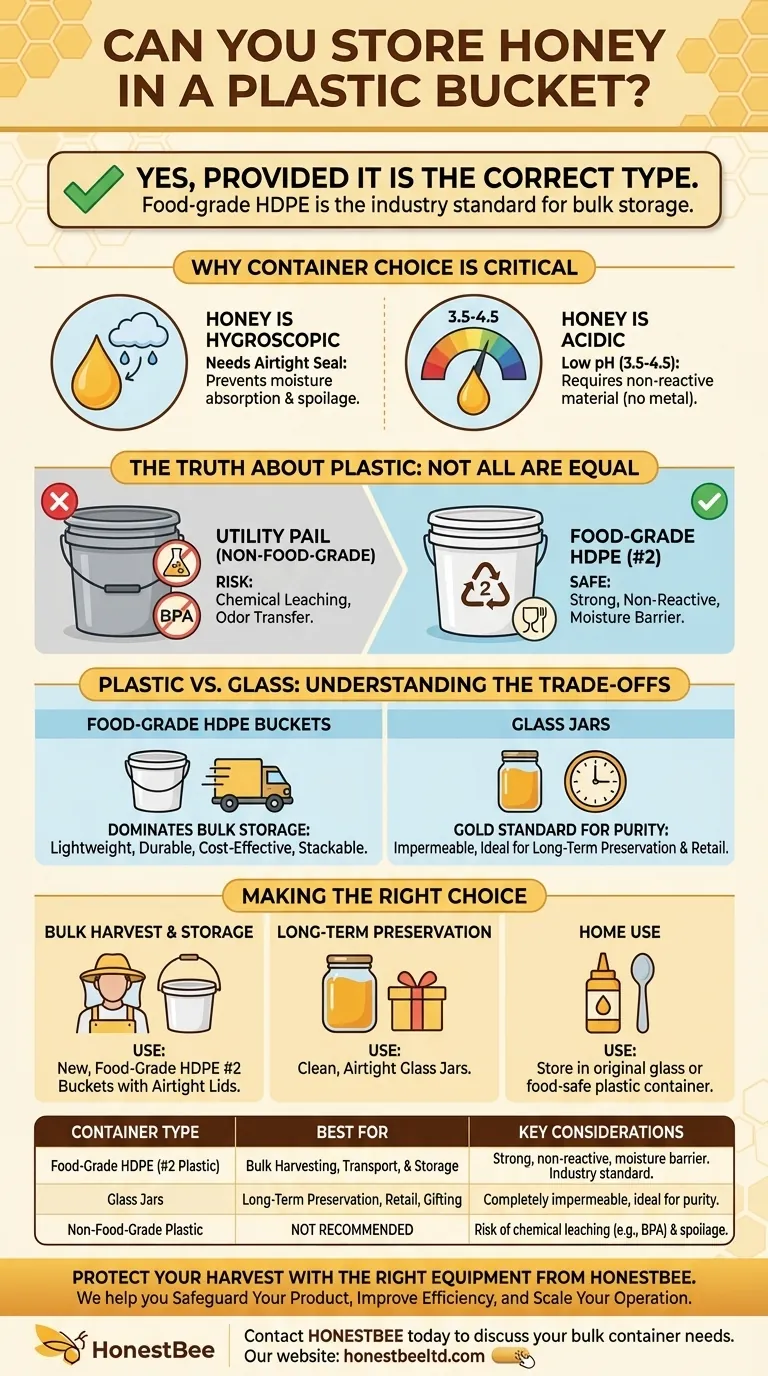
Related Products
- Food Grade Plastic Honey Bucket Pail for Beekeeping
- Hexagonal Glass Honey Jar with Wooden Lid Integrated Dipper Elegant Functional Storage
- Classic Drum Shaped Glass Honey Jar with Airtight Lid
- Classic Beehive Honey Bottle Jar with Squeeze Dispenser Lid
- Inverted Squeezable Honey Jar with No Drip Flip Top Cap for Easy Pouring
People Also Ask
- What are plastic buckets called? The Essential Guide to Plastic Pails
- Can we store honey in stainless steel container? A Guide to Safe, Bulk Honey Storage
- What types of containers are ideal for storing liquid honey? Preserve Quality with Glass or Plastic
- Can a bucket opener work on any type of plastic lid? Unlock the Secrets to Easy Pail Opening
- How heavy is a 5 gallon bucket of honey? A Beekeeper's Guide to Handling & Measuring

